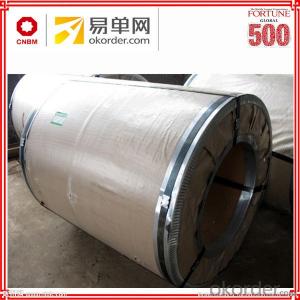Steel roofing sheets cold rolled free samples
- Loading Port:
- Tianjin
- Payment Terms:
- TT OR LC
- Min Order Qty:
- 50 m.t.
- Supply Capability:
- 52691 m.t./month
OKorder Service Pledge
OKorder Financial Service
You Might Also Like
Item specifice
Cold rolled steel coil/sheet is one of the main raw material of furniture automotive parts, industry steel parts, building construction, raw
material of color painted coil. Meanwhile we can provide full hard raw material they are properly used in the high strength construction.
Because cold rolled steel sheet is prone to rusting, standard practice is to apply a rust-preventative oil at the exit end of the temper mill (the last processing step). Rust-preventative oils are different than forming lubricants in that they contain special corrosion-inhibiting additions. In addition to the oil, Curtis Steel maintains clean, dry environments in climate controlled warehouses at all
its facilities to ensure our coils and sheets arrive to you in prime condition.
Cold rolled sheet products have been available for many, many years, and have been successfully used for a multitude of
applications. Today's cold rolled sheet products are much improved over those used in the past. They offer better control of
thickness, shape, width, surface finish, and other special quality features that compliment the emerging need for highly engineered
end use applications.
Standard and Grade :
Cold rolled steel coils | ||||
JIS G3141-2005 | EN10130-2006 | ASTM A1008-12a | ||
Commercial quality | SPCC | DC01 | CS Type A/B/C | |
Drawing quality | SPCD | DC03 | DS Type A/B | |
Deep drawing quality | SPCE SPCF(non aging) | DC04 | DDS | |
Extra deep drawing quality | SPCG(non aging) | DC05/06 | EDDS | |
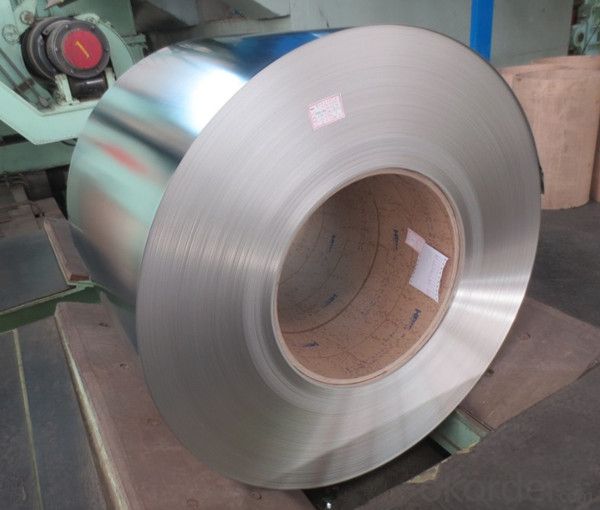
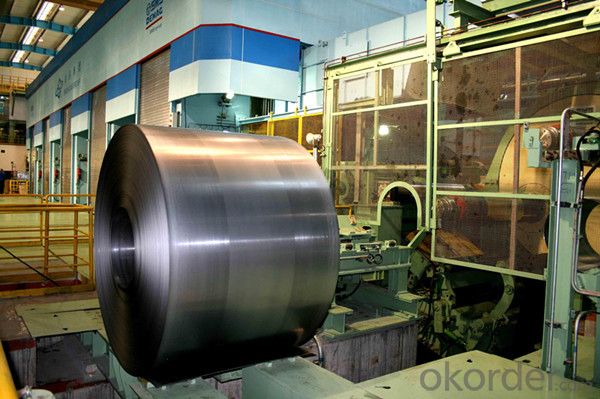


Application :
Automobile Industry, White Goods, Home Applicances, Oil & Air filters, semi product for coating with enamel or zinc, construction &
building sector, air-conditioning, furniture, radiators, tubes, profiles, mechanical construction, shelving, containers, drums
Packing:
Packaging Detail | The packing of coil consists of anti-damp paper ,PVC film ,hardboard paper , steel box , strapped with steel strips, fitted with locks and edge protectors and guarantees the optimal condition of the delivered goods. Each coil can be additionally fitted with wooden/steel skids(eye of the side) or wooden pallets(eye of the sky) |
Delivery Time | within 30 days of receipt of LC original or prepayment |
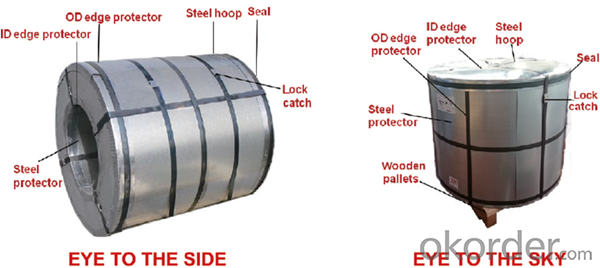
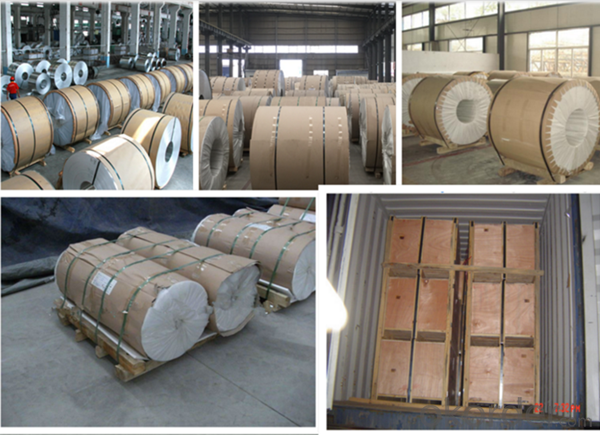
Our Services:
MOQ | FCL, 25 metric tons per 20GP, can be assorted with different sizes. |
LCL for trial order is acceptable. | |
Price Term | EX-WORK, FOB China Port, CNF, CIF |
Payment | T/T, 30% advanced payment before production and balance before shipment; OR Irrevocable L/C at sight. |
Delivery Time | within 30 days of receipt of LC original or prepayment |
FAQ:
1. Can you offer OEM to me? What about MOQ?
Of course, we are a professional with OEM manufacturer for 9 years. the MOQ can be 50 ton/ order.
2. How to guarantee the quality of the products?
We have established the international advanced quality management system,every link from raw material to final product we
have strict quality test;We resolutely put an end to unqualified products flowing into the market. At the same time, we will
provide necessary follow-up service assurance.
3. How long can we receive the product after purchase?
Usually within thirty working days after receiving buyer’s advance payment or LC. We will arrange the factory manufacturing
as soon as possible. The cargo readiness usually takes 15-25 days, but the shipment will depend on the vessel situation.
4.How Can I Get Some Sample?
We are honored to offer you free sample, but courier charges will be on your side.
- Q:Can steel sheets be used for elevator interiors?
- Yes, steel sheets can be used for elevator interiors. Steel is a durable and versatile material that can be easily customized and shaped to fit the interior design requirements of an elevator. It provides a sleek and modern look, while also offering strength and durability to withstand daily wear and tear.
- Q:Can steel sheets be used for automotive suspension components?
- Yes, steel sheets can be used for automotive suspension components. Steel is a common material used in automotive manufacturing due to its strength, durability, and cost-effectiveness. Steel sheets can be shaped and formed into various suspension components such as control arms, coil springs, and stabilizer bars, providing the necessary support and stability required for a vehicle's suspension system.
- Q:What is the average lead time for ordering steel sheets?
- The lead time for ordering steel sheets can vary due to different factors, including the supplier, required quantity, customization needs, and current market conditions. Typically, the lead time ranges from a few days to several weeks. If the supplier has the steel sheets in stock, the lead time can be as short as a few days or less, ensuring prompt order fulfillment. However, if the sheets need to be obtained from a specific mill or manufacturer, the lead time may be longer. This is particularly true for orders with custom specifications, such as specific dimensions, finishes, or steel grades. Other factors that impact lead time include the supplier's production capacity and workload, transportation and logistics considerations, and potential delays resulting from unexpected events like natural disasters or labor disputes. To obtain accurate lead time estimates, it is crucial to communicate with the supplier or manufacturer. They can provide specific information based on their production capabilities and current circumstances. Moreover, it is advisable to plan ahead and allow for some buffer time to accommodate potential delays or unforeseen challenges during the ordering process.
- Q:What are the limitations of using steel sheets?
- There are several limitations associated with using steel sheets in various applications. Firstly, steel sheets are relatively heavy compared to other materials, which can pose challenges in terms of transportation and installation. This weight can also limit their use in applications where weight reduction is critical, such as aerospace or automotive industries. Secondly, steel sheets are susceptible to corrosion, especially when exposed to moisture and chemicals. If not properly protected, this can lead to rusting and a decrease in structural integrity over time. Therefore, additional coatings or treatments are often required to prevent corrosion, adding to the overall cost and maintenance requirements of steel sheet usage. Another limitation is that steel sheets have limited flexibility and cannot be easily molded or shaped into complex forms. This restricts their use in applications where intricate designs or curved surfaces are required, such as in the construction of curved roofs or architectural structures. Furthermore, steel sheets have poor thermal insulation properties, meaning they conduct heat and cold more readily than other materials. This can result in temperature fluctuations and energy loss in buildings, requiring additional insulation measures to maintain thermal comfort and energy efficiency. Lastly, steel sheets are a finite resource and their production can have a significant environmental impact. The extraction of raw materials, energy consumption, and carbon emissions associated with steel production make it less sustainable compared to alternative materials. In summary, while steel sheets are widely used for their strength and durability, their limitations include their weight, susceptibility to corrosion, limited flexibility, poor thermal insulation properties, and environmental impact. These limitations should be considered when selecting materials for specific applications.
- Q:What is the difference between a self-color and painted steel sheet?
- A steel sheet that has not been coated or treated with any additional colors or finishes is referred to as a self-color steel sheet. It maintains the steel surface's natural color and appearance, which is typically a metallic gray or silver. Conversely, a painted steel sheet is one that has been coated with a layer of paint or another protective finish. This coating serves multiple purposes, including enhancing the steel sheet's aesthetic appeal, providing additional protection against rust and corrosion, and increasing its durability. The primary distinction between a self-color and painted steel sheet lies in the presence or absence of a coating. While a self-color sheet preserves the raw and natural appearance of the steel, a painted sheet offers a wide array of color options, enabling customization and harmonization with various design schemes. Furthermore, the existence of a paint or protective coating on a steel sheet provides an extra layer of defense against environmental elements such as moisture, chemicals, and UV rays. This helps prevent the steel from corroding or deteriorating over time, thereby extending its lifespan and ensuring its performance in various applications. To summarize, the main contrast between a self-color and painted steel sheet is the presence or absence of a coating. While a self-color sheet retains the natural appearance of steel, a painted sheet offers added protection, customization options, and aesthetic appeal.
- Q:What is the difference between a hot rolled and pickled steel sheet?
- A hot rolled steel sheet is made by rolling a heated slab of steel through a series of large rollers, resulting in a thick and rough surface finish. On the other hand, a pickled steel sheet undergoes an additional process called pickling, where the surface of the hot rolled steel is treated with an acid solution to remove impurities and create a smooth and clean surface finish. So, the main difference between the two is the surface finish - hot rolled steel has a rougher surface, while pickled steel has a smoother and cleaner surface.
- Q:What safety precautions should be taken when handling steel sheets?
- When handling steel sheets, it is important to take the following safety precautions: 1. Use appropriate personal protective equipment (PPE) such as gloves, safety glasses, and steel-toed boots to protect against cuts, abrasions, and possible falling objects. 2. Ensure proper body mechanics and lifting techniques when handling heavy steel sheets to prevent back strain or injuries. Consider using mechanical aids like cranes or forklifts when necessary. 3. Inspect the sheets for sharp edges, burrs, or other defects that could cause cuts or punctures. If any defects are found, they should be addressed or the sheet should be replaced. 4. Store the steel sheets in a stable and secure manner, ensuring they are properly stacked and secured to prevent them from falling or shifting. 5. Use caution when transporting the sheets, ensuring they are securely fastened and properly balanced on carts or trucks to avoid accidents or injuries. 6. Avoid working alone when handling large or heavy steel sheets. Having a colleague nearby can provide assistance and ensure prompt response in case of emergencies. 7. Maintain a clean and organized work area to minimize the risk of tripping or slipping on debris or loose materials. 8. Follow proper material handling procedures and techniques to prevent accidental drops or improper placement of the steel sheets. 9. Take precautions against fire hazards by keeping flammable materials away from the steel sheets and having appropriate fire extinguishing equipment readily available. 10. Provide training and instruction to all personnel involved in handling steel sheets to ensure they are aware of the hazards and safety procedures associated with this task.
- Q:Are steel sheets suitable for data center infrastructure?
- Indeed, data center infrastructure can rely on steel sheets. The utilization of steel sheets in the establishment of data centers is prevalent because of their exceptional robustness, longevity, and resistance to fire. Furthermore, they furnish essential support for the infrastructure, encompassing server racks, cabinets, and raised flooring systems. Not only do steel sheets safeguard data center equipment against potential dangers such as electromagnetic interference (EMI) and physical harm, but they can also be conveniently tailored and adapted to suit the precise demands of a data center. This adaptability renders them a favored option for constructing data center infrastructure.
- Q:Stainless steel plate how to cast mirror plate?
- Stainless steel hot rolled plate mirror polishing (mirror, polishing)In recent years, more and more requirements for polishing of stainless steel hot rolled plate, and even mirror polishing have been demanded. The treatment of hot rolled plate is quite different from that of cold rolled plate, and the whole process is more complicated and difficult to handle than cold rolled plate.
- Q:What kind of steel plate is HIC?
- Is suitable for use in acidic environment, hydrogen sulfide corrosion resistance of the steel plate. Also known as hydrogen or hydrogen resistant steel, generally pressure vessel or pipe steel.
1. Manufacturer Overview |
|
|---|---|
| Location | |
| Year Established | |
| Annual Output Value | |
| Main Markets | |
| Company Certifications | |
2. Manufacturer Certificates |
|
|---|---|
| a) Certification Name | |
| Range | |
| Reference | |
| Validity Period | |
3. Manufacturer Capability |
|
|---|---|
| a)Trade Capacity | |
| Nearest Port | |
| Export Percentage | |
| No.of Employees in Trade Department | |
| Language Spoken: | |
| b)Factory Information | |
| Factory Size: | |
| No. of Production Lines | |
| Contract Manufacturing | |
| Product Price Range | |
Send your message to us
Steel roofing sheets cold rolled free samples
- Loading Port:
- Tianjin
- Payment Terms:
- TT OR LC
- Min Order Qty:
- 50 m.t.
- Supply Capability:
- 52691 m.t./month
OKorder Service Pledge
OKorder Financial Service
Similar products
New products
Hot products
Hot Searches
Related keywords
